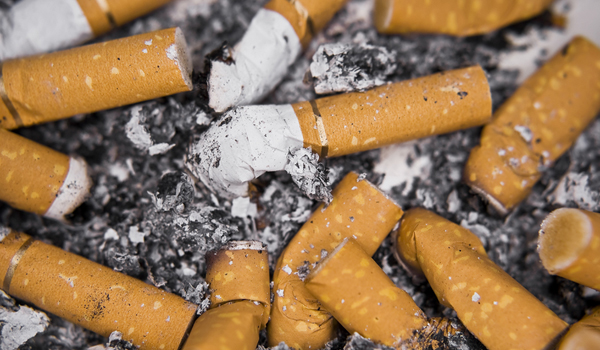The Brain Science Behind Raising the Tobacco Buying Age to 21

San Francisco's new tobacco ordinance — which raises the legal age to buy tobacco products from 18 to 21 — could help improve the health of a new generation of people by preventing addiction, health officials said.
Nationally, 18-year-olds can buy tobacco products, including cigarettes and cigars. However, in the past decade or so, some American communities, cities and one state (Hawaii) have passed ordinances and laws increasing the minimum age to 21.
These new policies could lead to better brain development among young adults who might have otherwise chosen to smoke at a younger age, said Brian King, the deputy director for research translation at the Centers for Disease Control and Prevention's Office on Smoking and Health. [10 Scientific Quit-Smoking Tips]
Research suggests that tobacco use, particularly nicotine exposure, can harm the developing human brain, King said. Moreover, the brain doesn't stop developing during the teenage years, but continues until about age 25, he said.
"There's an emerging body of evidence that has demonstrated that nicotine exposure can particularly harm the prefrontal cortex [of the brain] and lead to adverse health effects in the developing adolescent brain," King told Live Science. "And that can also continue into young adulthood."
The prefrontal cortex is involved with aspects of decision-making, cognition and memory, he added.
The new San Francisco ordinance, which is set to take effect June 1 and will also affect e-cigarettes, is also aimed at deterring people from smoking at an early age. About 90 percent of tobacco users begin before age 18, and the vast majority of the rest start before age 26, King said.
Get the world’s most fascinating discoveries delivered straight to your inbox.
"If you can prevent use before the age of 18, you're preventing about 9 in 10 tobacco users," he said. "Then we don't have to help them quit, if we can prevent them from starting in the first place."
According to the 2009 Family Smoking Prevention and Tobacco Control Act, the Food and Drug Administration cannot raise the national age of purchasing tobacco products above age 18, King said. Congress could pass a bill increasing the age, but if it does not, any decision to set the age higher will have to come from individual states, cities and communities, he said.
However, it's not immediately clear how the San Francisco ordinance will affect smoking rates. New York City; Berkeley, California; Boston; and dozens of other cities and communities have increased the minimum buying age to 21, according to the Preventing Tobacco Addiction Foundation, but not enough time has passed in order to study the outcomes of these measures sufficiently.
The preliminary data looks promising, King said. The city of Needham, Massachusetts, raised the buying age to 21 more than a decade ago, in 2005, and a recent survey of the region's youth showed that teenagers in Needham smoked less tobacco in the past 30 days than their peers in neighboring communities did.
That 2015 study, published in the journal Tobacco Control, showed that reported smoking rates dropped from 13 percent to 7 percent among teens in Needham from 2006 to 2010. This drop was larger than the 15 percent to 12 percent decrease seen in neighboring communities that did not raise the buying age, the researchers who conducted the study said. [Five Reasons Smoking Rules are Lax]
Furthermore, the decline was consistent for both genders and for Caucasian and non-Caucasian youth, the researchers reported.
In a March 2015 report, the Institute of Medicine estimated that if all states were to raise the minimum tobacco-buying age to 21, there would be a 12 percent drop in cigarette smoking prevalence across the nation by the year 2100, said King, who was not involved with the research.
"That would translate into nearly 250,000 fewer premature deaths from smoking," he said.
King added that raising the buying age is only one piece of the puzzle in the movement to stem tobacco use in youth and young adults. Policies to keep buildings or other areas smoke-free, media campaigns and better patient services are also helping to prevent or stop tobacco use, he said.
"Youth and young adults are particularly vulnerable to addiction for a variety of reasons," he said. "And so, preventing youth and young adults from starting in the first place could potentially prevent them from a lifelong addiction to tobacco products."
Follow Laura Geggel on Twitter @LauraGeggel. Follow Live Science @livescience, Facebook & Google+. Originally published on Live Science.

Laura is the managing editor at Live Science. She also runs the archaeology section and the Life's Little Mysteries series. Her work has appeared in The New York Times, Scholastic, Popular Science and Spectrum, a site on autism research. She has won multiple awards from the Society of Professional Journalists and the Washington Newspaper Publishers Association for her reporting at a weekly newspaper near Seattle. Laura holds a bachelor's degree in English literature and psychology from Washington University in St. Louis and a master's degree in science writing from NYU.


